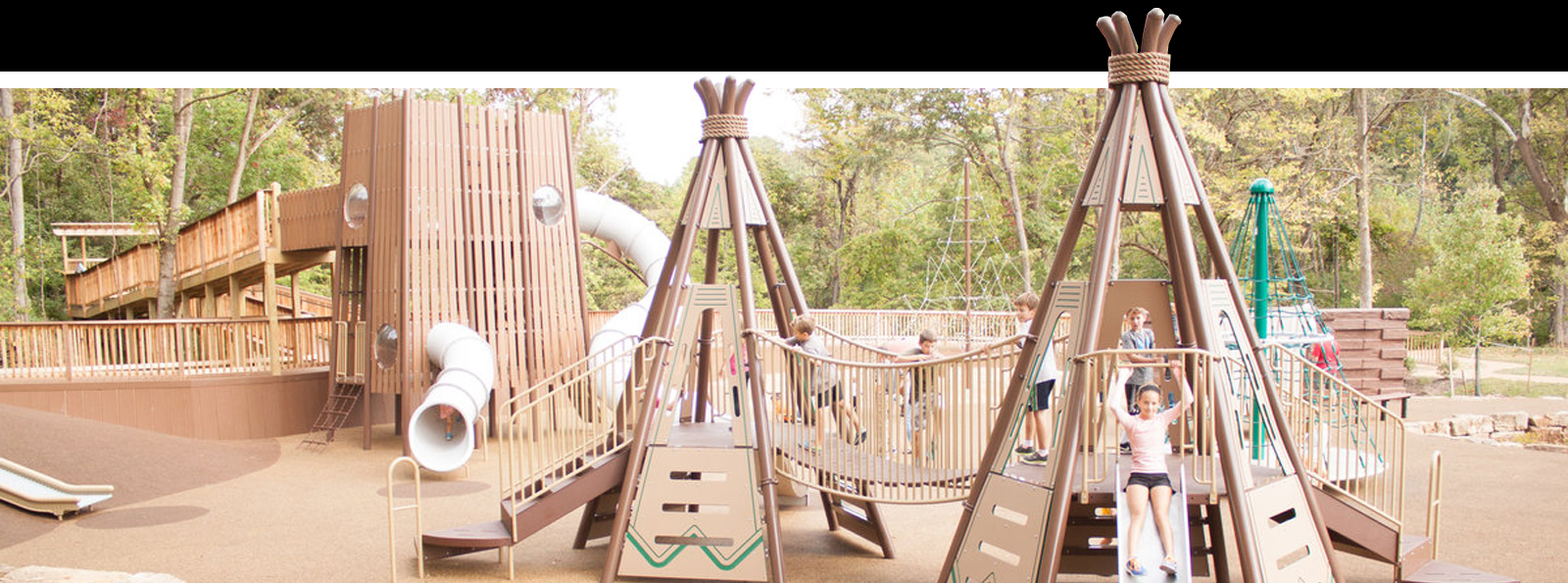As we know, outdoor play is vital for the development of all children, and we need to ensure that their outdoor experiences are as safe as possible. Playground safety surfacing reduces the risk of injuries by providing a cushion that absorbs the impact of a fall.
To provide effective playground surfacing, it’s important to use shock-absorbing materials that are inspected regularly. The most popular safety surfacing options include engineered wood fiber, rubber mulch, poured-in-place rubber, and synthetic turf.
If you choose a loose surface for your playground, you may be wondering about the practical differences between engineered wood and rubber. The Consumer Products Safety Commission (CPSC) has identified both wood fiber and rubber mulches as “appropriate surfacing” for playgrounds, so it comes down to which option better suits your needs. Let’s take a closer look at both.
Engineered wood fiber is manufactured from fresh wood and provides an all-weather surface. Because of the way it’s processed, the fiber contains no materials or debris that could be harmful to kids. Engineered wood fiber complies with ASTM F 1951 guidelines for public playground surface accessibility and, even though it’s a loose surface, is wheelchair accessible. It’s also among the more cost effective and sustainable playground surfaces available in the market.
Rubber mulch is made mostly from re-processed tires. Studies have shown that, inch-for-inch, rubber mulch offers greater shock-absorbing capacity, and it provides a softer landing than wood. It also lasts longer and requires less maintenance; because the material is denser than wood, it’s less likely to be washed away in heavy rain or to blow away in windy weather. When considering rubber mulch, your budget will be a factor, as it tends to cost more per square foot than wood fiber.
Remember, your playground is a long-term investment, so it’s important to carefully review your options for each element, including safety surfacing. Check your budget and also consider your maintenance schedule, as some options require more maintenance than others. It’s also vital to follow all local laws that pertain to safety surfacing and to have your playground inspected regularly by a Certified Playground Safety Inspector.
If you need more assistance deciding which safety surface is right for you, give us a call at (713) 939-9888 and we’ll be happy to help.
The coldest days of winter are just ahead of us, and with them come additional challenges of playground safety and maintenance. Research shows that kids who play outside during winter tend to be healthier than those who stay indoors, so we need to make sure those kids have a safe place to play throughout the season. Paying extra attention to playground maintenance during the cold season helps ensure the safety of both the kids and your equipment, and here are a few pointers to keep in mind.
Surfacing
Winters can be rainy here in Texas, and precipitation can wash away the material that makes up your playground surface. Check the surfacing under and around all equipment at least once a week to make sure you have adequate cushioning to avoid injuries due to falls. Also, remember that freezing temperatures can decrease your surfacing’s impact attenuation (its ability to absorb shock), so always check it thoroughly after a hard freeze.
Wood Preservation
If you have wooden equipment on your playground, keep in mind that winter conditions can lead to wood degradation. Damaged wood may pose a safety hazard in addition to being expensive to replace. Use a non-toxic wood preservative on wooden structures to prevent deterioration, and also check for any loose-fitting elements that could be blown away by high winter winds.
Hardware
Harsh weather conditions can loosen the hardware on your playground equipment, which presents a serious safety hazard. Inspect all hardware to make sure it’s secure before the coldest days of winter set in. This is important for ensuring the longevity of your equipment as well as for keeping kids safe from injury.
Stairs and Slides
While there’s little chance of snow here in south Texas, there’s always the possibility of icy conditions, which can make structures such as stairs and slides slippery and therefore dangerous. It’s important to monitor these structures and make sure they are dry and free of ice before kids engage in play. Also, remember to clear any standing water, as it can pose an additional hazard if it freezes.
Plan for Winter Attire
Winter scarves and hoods with drawstrings may pose choking hazards if they catch on to protruding or jagged surfaces, such as splitting wood or exposed bolts. Check your playground equipment for any elements that might snag winter clothing, and repair or replace as necessary.
Inspection
To ensure the safest possible experience for kids who visit your playground this winter, have your grounds and equipment inspected by a certified professional who can identify any hazardous conditions. Areas to look out for include fall zones, pinch points, and protrusions. Once the problems are identified, make sure to complete any needed repairs and replacements promptly.
Winter maintenance benefits not only the kids who visit your playground, but your equipment as well. By identifying hazards and conducting any needed repairs promptly, you increase the lifespan of your equipment in addition to protecting the families you serve.





